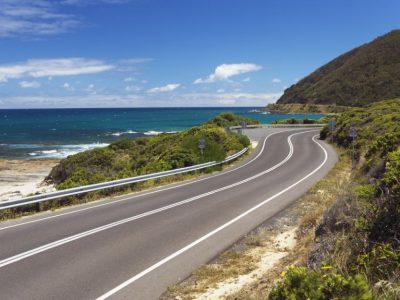COASTAL CONFLICT AND CULTURAL MODELS

Navigating the right road of conflicts (pc: Rough Guides)
I was delighted recently to have my attention drawn by Naomi Edwards to a fascinating paper entitled Cultural Models and Shoreline Cultural Conflict. It was written by Robert Thompson of University of Rhode Island in Coastal Management ( 2007, 35,211-237). I know, I should have seen it sooner, but these days I am very grateful to PhD scholars for keeping me up to date with literature.
Every now and then, I encounter a paper that is hard to put down. In particular, papers that relate to shoreline law have provided me with new insights into coastal issues. As a geomorphologist, one can see the world through geological and coastal process eyes all the time avoiding many of the other forces at play in coastal regions. That is fine but can be limiting if there is also an interest in human use and abuse of coastal resources at various spatial scales. Jim Titus was the first legal scholar to get me excited on coastal law with his epic paper in the Maryland Law Review ( 1998, 57, 1279-1399) on Rising Seas, Coastal Erosion and the Takings Clause. This paper, along with its 494 footnotes is not an easy read, and I must have some sympathy to those who attended a short course I once gave at UNSW where the Titus paper was prescribed reading! However, Jim introduced me to a new world and it was a joy to accompany him to a NSW Coastal Conference a couple of years later and in 2013 visit him in Washington and go with him in the field in Maryland. It even inspired me to write some papers in law journals. In addition, it has been a pleasure to work with several practicing lawyers such as Andrew Beatty and to talk at legal conferences. Here I often felt out of place and in awe of the capacity of lawyers to grasp the essence of coastal problems. It has also been a joy to see PhD Scholars such as John Corkill undertake research in shoreline law and demonstrate the need the investigate more fully than some of us have done on the complexities of the issues involving ambulatory boundaries.
What attracted me about Thompson’s paper was its scope in identifying the various social dimensions to coastal conflict. We all recognise that coastal spaces can be quite contested. He makes the point that “along the coast we witness property conflicts that would seem strange at inland locations”. Unlike some other authors, he goes beyond the simple distinction of conflict between property owners seeking to use their private rights to use land as they see fit in comparison with those who take a more public good position. He sees a range of behaviours that may occur which can lead to conflict in any given location. He describes seven cultural models of property that can play a role in coastal communities. They are termed by him as:
- Sovereignty
- Community
- Landscape
- Ecology
- Commodity
- Moral order
- Productivity
The point is made that by focussing on these models we obtain a better understanding of how property conflicts can occur in “ real world circumstances” especially when we do not share the models in considering management decisions given that exercise of one or more models is a source of community conflict more so in coastal areas than with inland property. His examples are mostly from the USA where he finds that “too much emphasis is currently being placed on the sovereignty and commodity models”.
In subsequent blogs, I will explore in turn each of his models in the light of my own experience in Australia and overseas. I hope that this discussion will prompt others in the words of Thompson to establish “a better balance between all of the cultural models of property”.
Words by Prof Bruce Thom. Please respect Bruce Thom’s thoughts and reference where appropriately: (c) ACS, 2016, posted 15th August 2016, for correspondence about this blog post please email admin@australiancoastalsociety.org.


 10 years of the Australian Coastal Society
10 years of the Australian Coastal Society